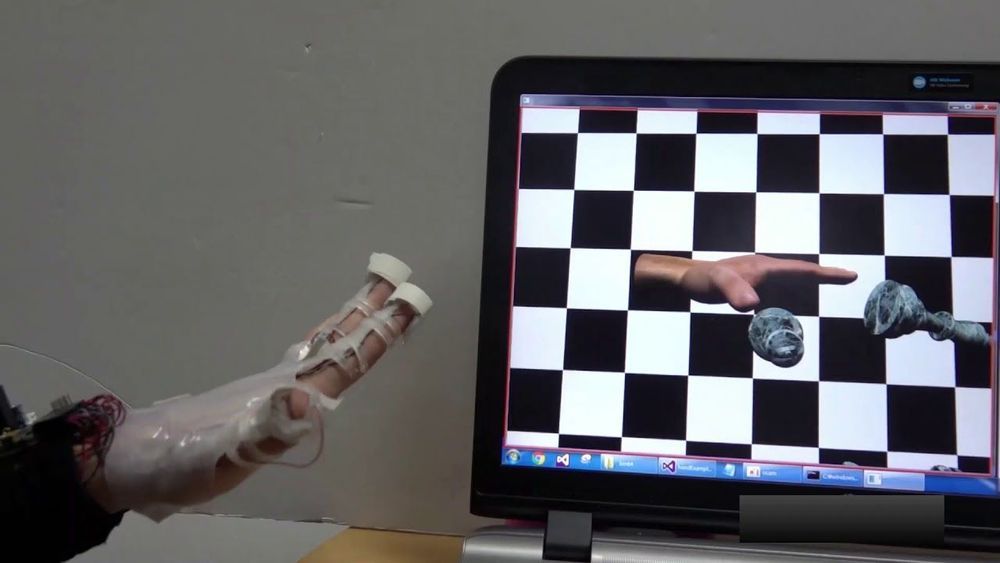The Earthwatch Institute concluded in the last debate of the Royal Geographical Society of London, that bees are the most important living being on the planet, however, scientists have also made an announcement: Bees have already entered into extinction risk.
Hallucinations are spooky and, fortunately, fairly rare. But, a new study suggests, the real question isn’t so much why some people occasionally experience them. It’s why all of us aren’t hallucinating all the time.
In the study, Stanford University School of Medicine neuroscientists stimulated nerve cells in the visual cortex of mice to induce an illusory image in the animals’ minds. The scientists needed to stimulate a surprisingly small number of nerve cells, or neurons, in order to generate the perception, which caused the mice to behave in a particular way.
“Back in 2012, we had described the ability to control the activity of individually selected neurons in an awake, alert animal,” said Karl Deisseroth, MD, Ph.D., professor of bioengineering and of psychiatry and behavioral sciences. “Now, for the first time, we’ve been able to advance this capability to control multiple individually specified cells at once, and make an animal perceive something specific that in fact is not really there—and behave accordingly.”
Cat lovers from all over the world rejoice, developer Eric Blumrich is about to deliver you a treat. He is working on Peace Island, a video game which revolves around a group of felines going on adventures and solving mysteries together. If you ever wanted to see the world from a cat’s perspective, this game is your best chance to do so!
More info: patreon.com | youtube.com | kickstarter.com

Spaceflight is hard. Blasting heavy cargo, spacecraft, and maybe people to respectable speeds over interplanetary distances requires an amount of propellant too massive for current rockets to haul into the void. That is, unless you have an engine that can generate thrust without fuel.
It sounds impossible, but scientists at NASA’s Eagleworks Laboratories have been building and testing just such a thing. Called an EmDrive, the physics-defying contraption ostensibly produces thrust simply by bouncing microwaves around inside a closed, cone-shaped cavity, no fuel required.
The device last made headlines in late 2016 when a leaked study reported the results of the latest round of NASA testing. Now, independent researchers in Germany have built their own EmDrive, with the goal of testing innovative propulsion concepts and determining whether their seeming success is real or an artifact.
A glove focused on user experience in interacting with virtual objects is in the news. This virtual reality glove is the topic of a research article. The researchers described their virtual reality glove in detail in their paper, “Pneumatic actuator and flexible piezoelectric sensor for soft virtual reality glove system,” in Scientific Reports.
No, this is hardly the first instance of researchers able to reproduce texture but this attempt is noteworthy. As pointed out in natureasia.com, the glove system in this instance is one that allows the wearer to manipulate a virtual hand, pick up an object in virtual reality and feel its shape.
Bill Andrews took to the D-brief blog on Discover to examine the glove’s characteristics— of sensors and actuators. The Korean team designed it as a glove to manipulate a virtual hand inside a digital realm, said Andrews.
https://www.prweb.com/releases/regenerage_international_iime…449142.htm

Test-riding Byar’s chainless electric bike with all-in-one hub motor and integrated lock.
(21 Oct 2017) LEADIN:
Forget plugging in to charge up your new electric car, engineers are now working towards a future where you never need to plug in ever again.
That’s some time off, but a new generation of batteries is being designed to power the latest electric cars, from high energy cells to power sports models to those that power over long distances.
STORYLINE:
Electric cars are no longer concepts kept in top secret bunkers at a car manufacturers research unit.
Nor are they a seen as four wheeled status symbols of the wealthy elite.
In a recent study, a group of researchers from Hebrew University-Hadassah Medical School, Feinberg School of Medicine, and Tel Aviv University examined astrocytes in mice and found that these cells exhibited a senescent phenotype that led to neurodegeneration and neurotoxicity [1].
Age-dependent increase in senescent astrocytes adjacent to Aβ plaques
Cellular senescence, discovered in 1961 by Leonard Hayflick and Paul Moorhead, is a state in which cells no longer perform their functions, instead emitting harmful chemicals that turn other cells senescent… These cells are caused primarily by telomere shortening and DNA damage, they are known to contribute to many diseases, and this is not the first study that links them to neurodegeneration.
A whole new moon
Lava tubes. Cave cities. Extreme sports. The next century of lunar settlement is wilder than you think.








